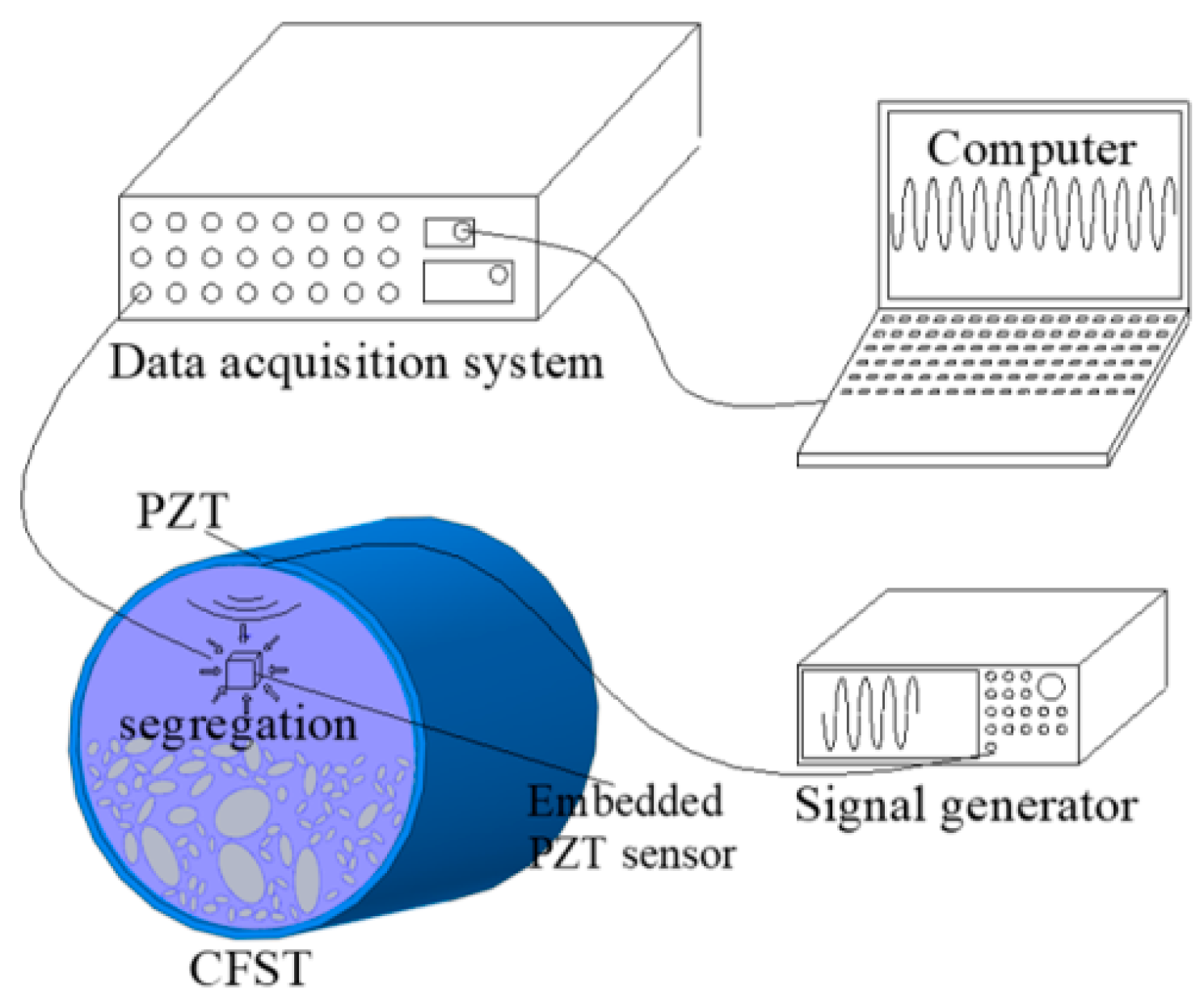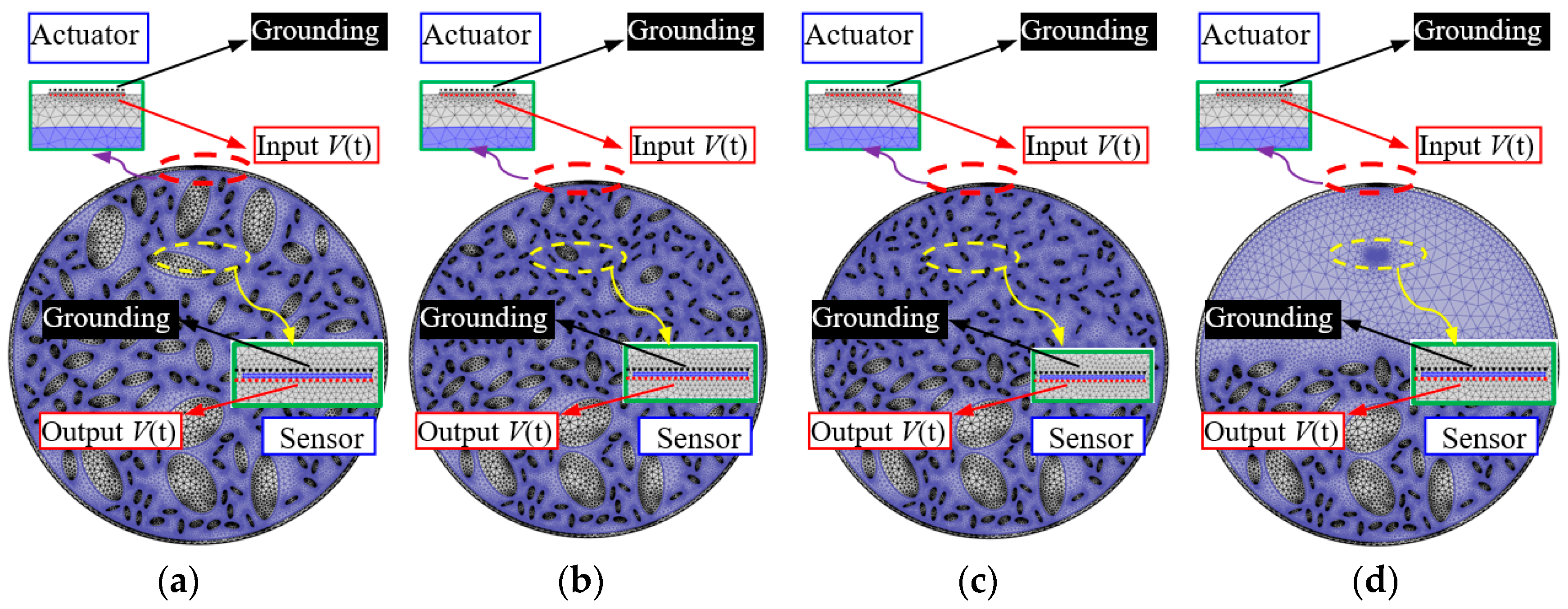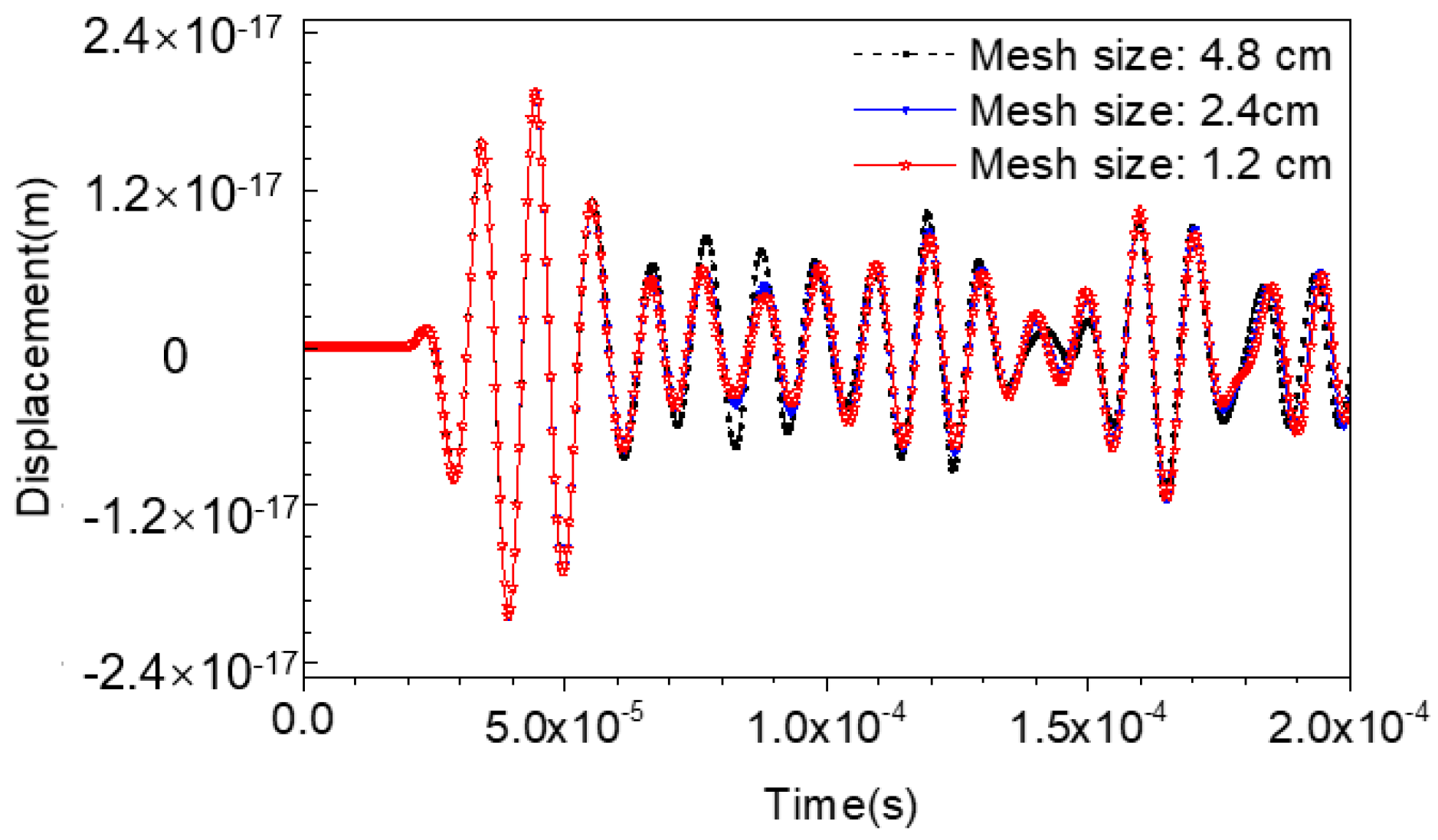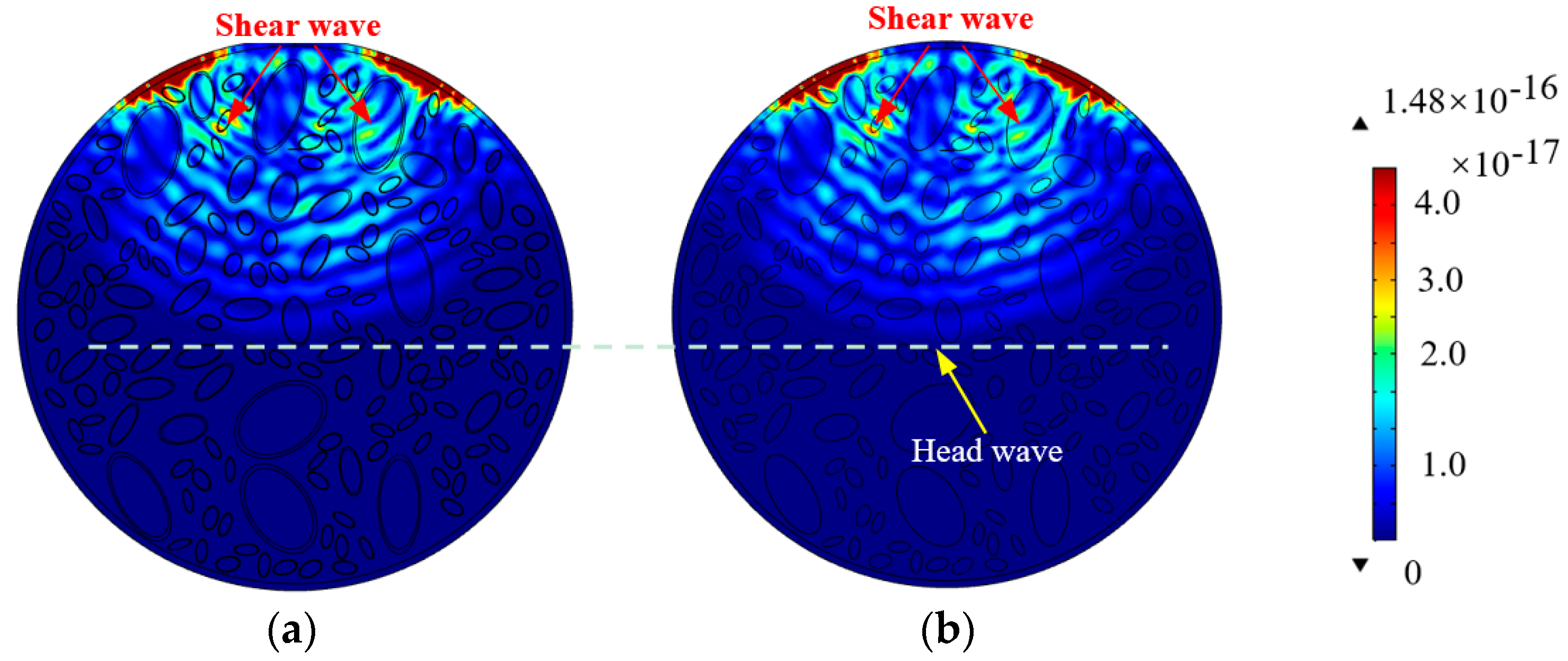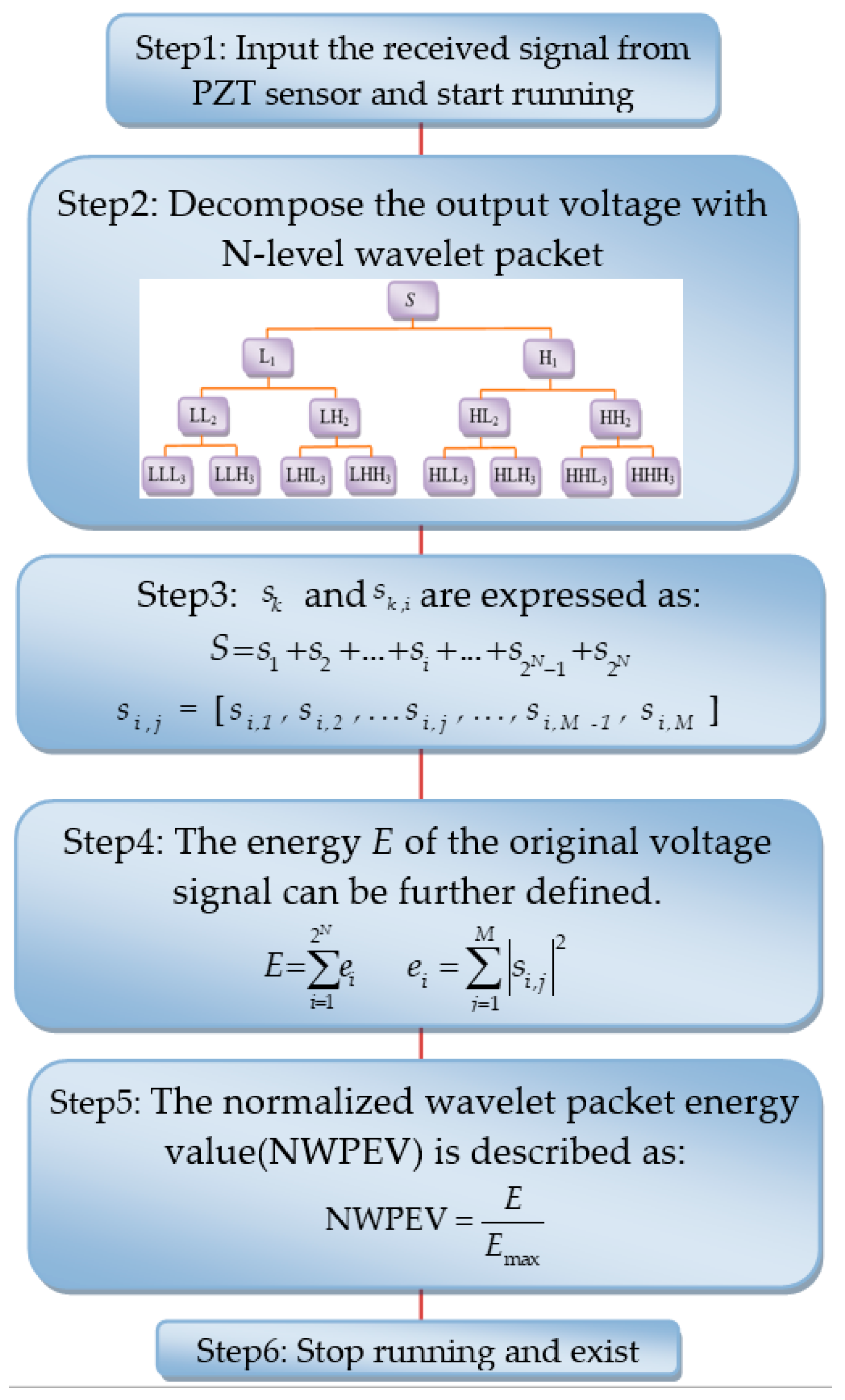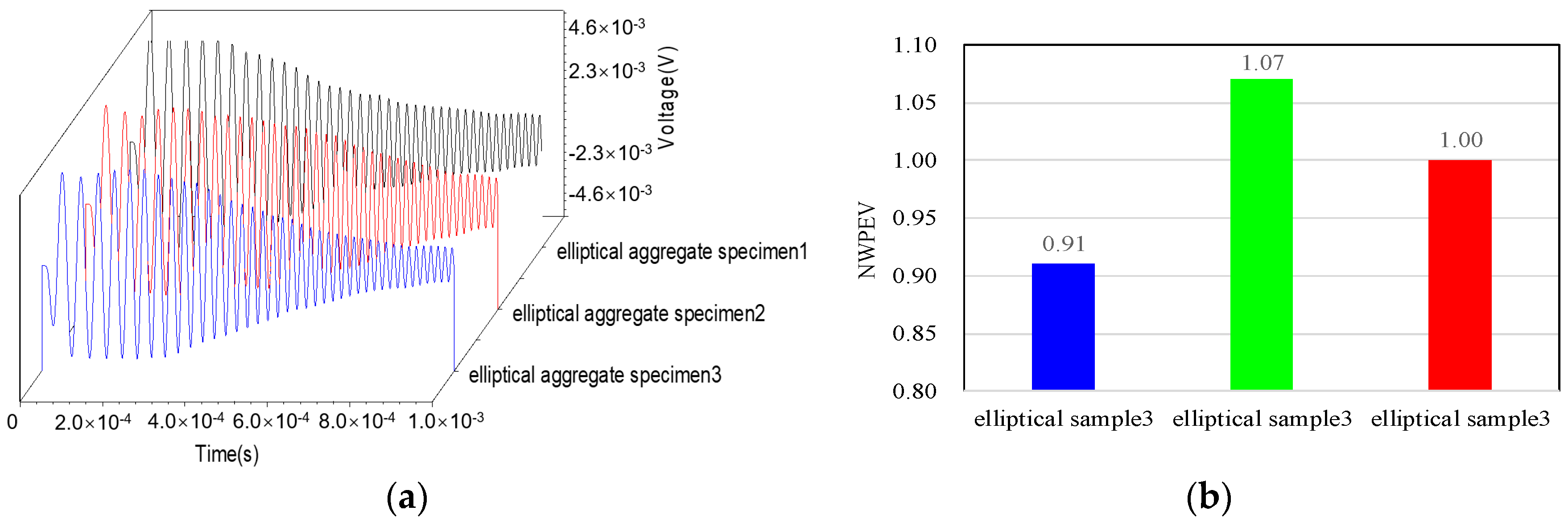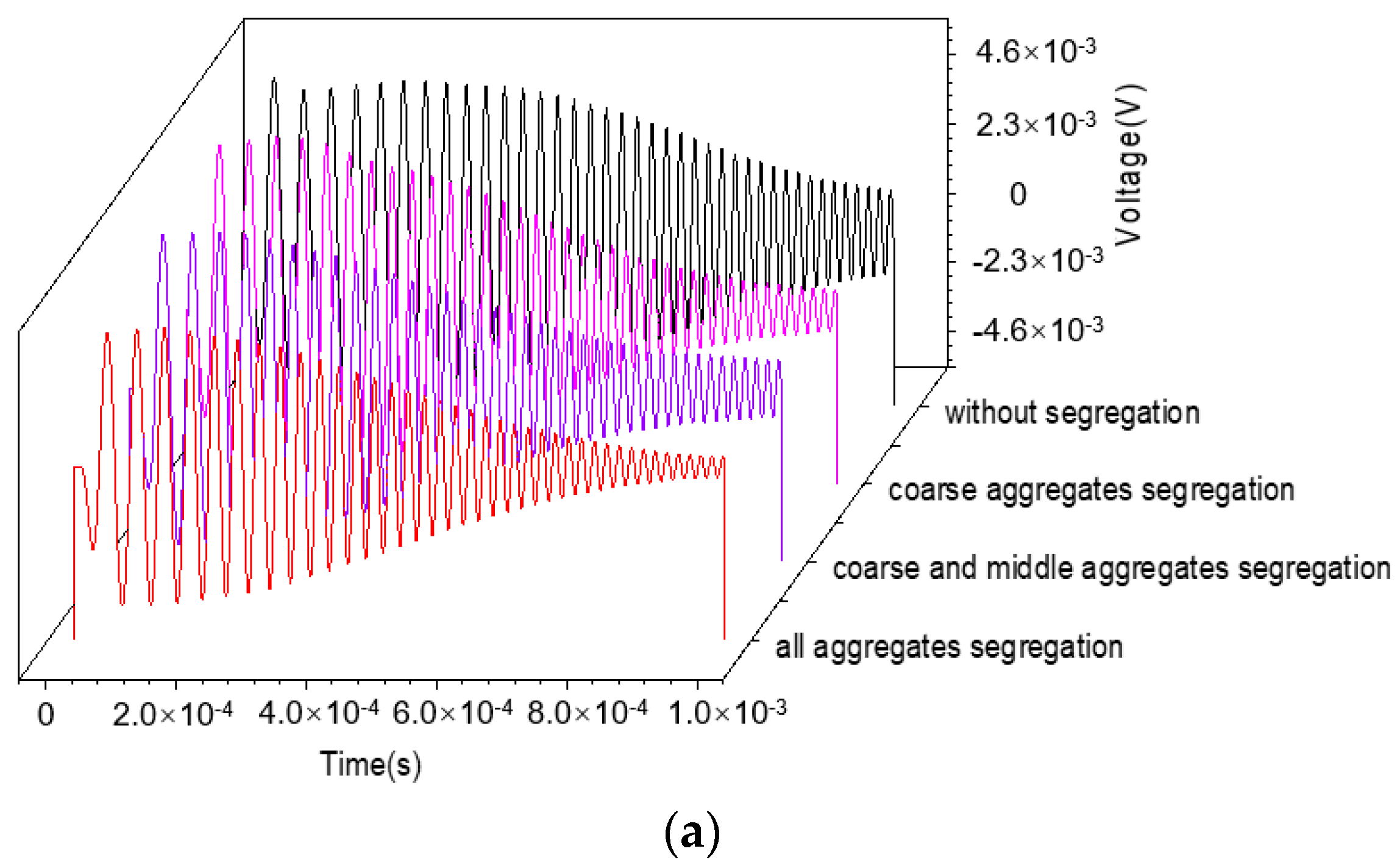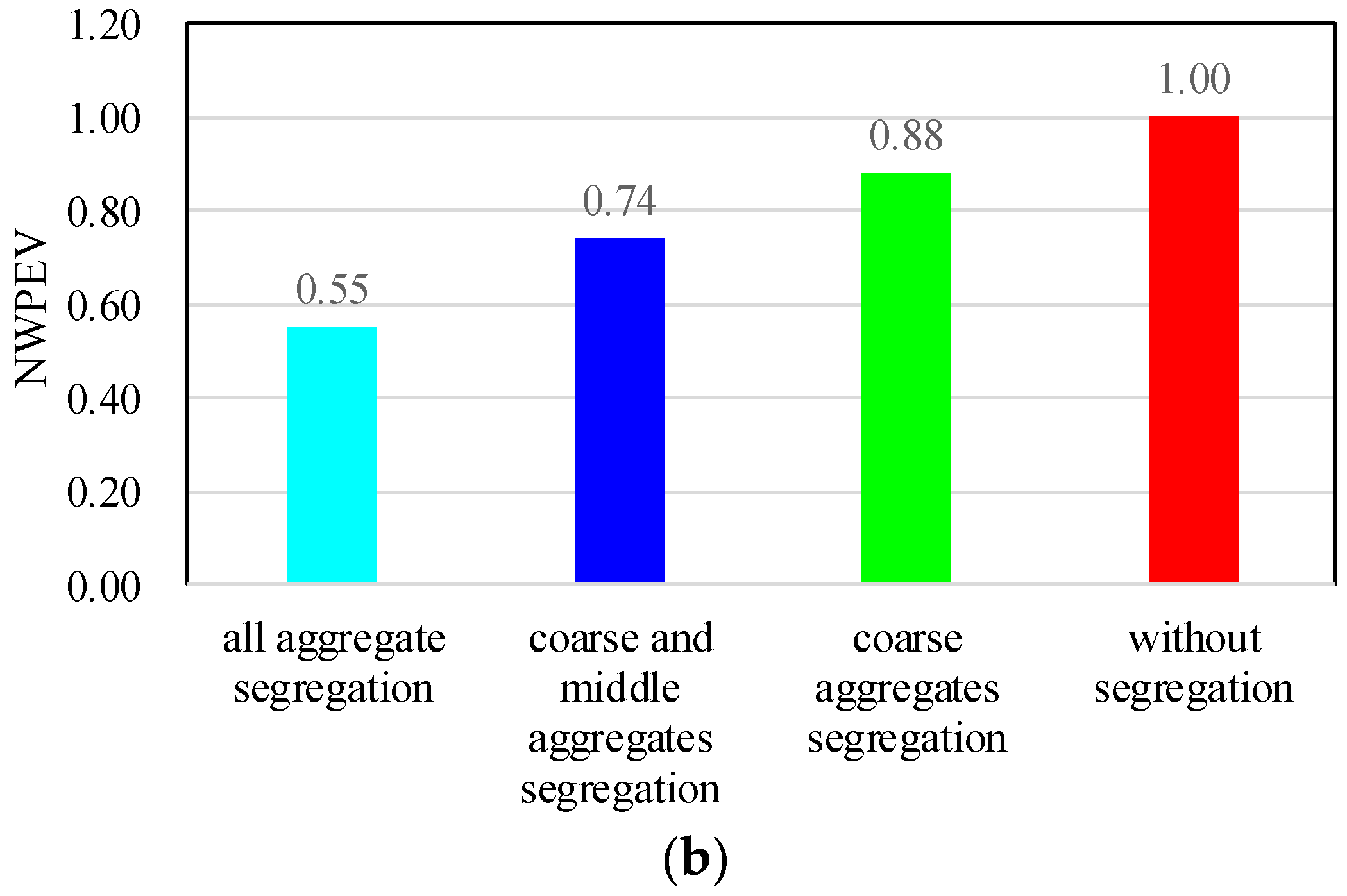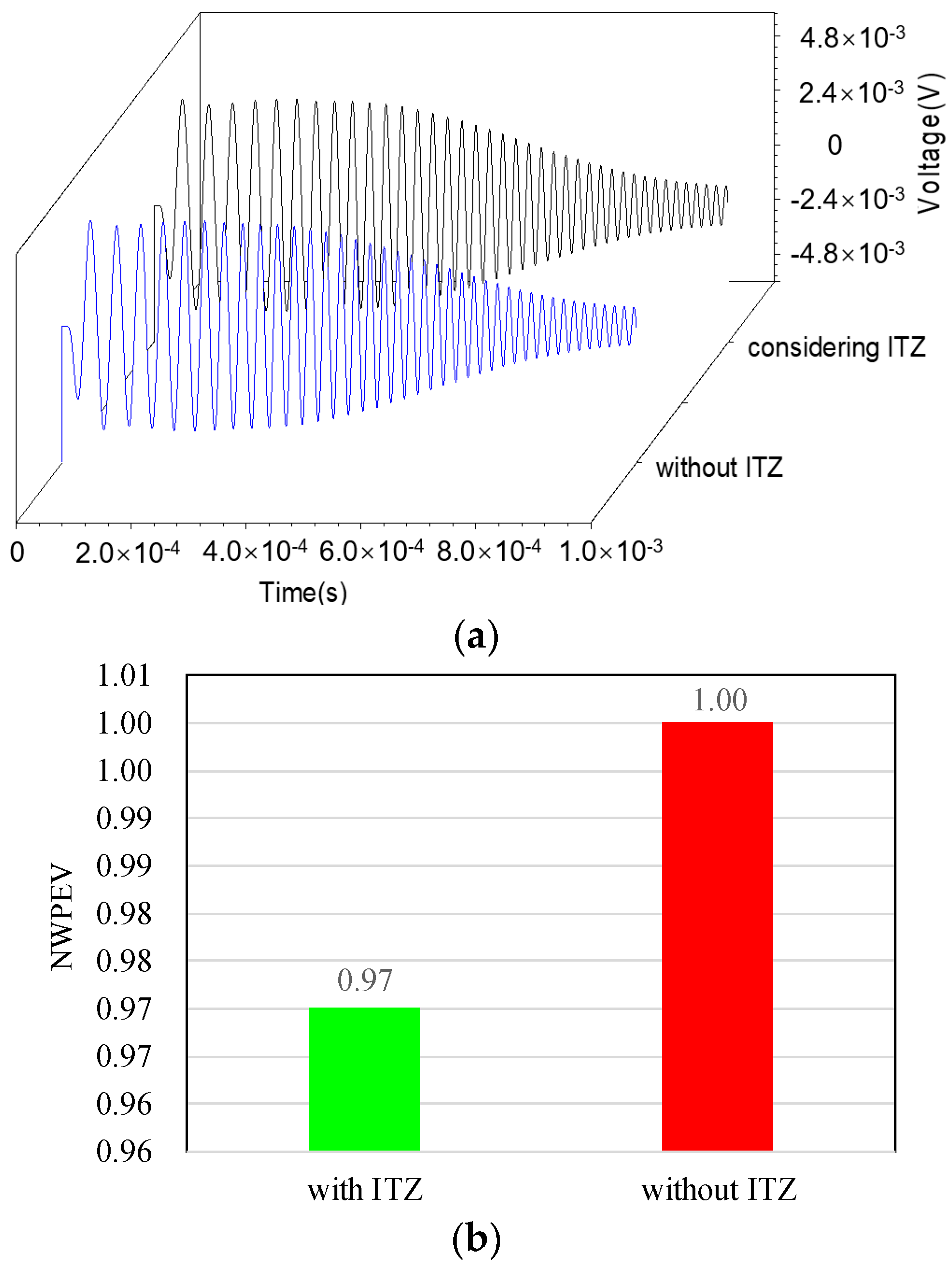1. Introduction
Concrete-filled steel tubular (CFST) members present excellent performance with high load-carrying capability, stiffness, and good ductility under strong dynamic excitations and earthquakes, as well as remarkable economic benefits in construction. Therefore, CFST components have been widely employed in high-rise buildings, long-span bridges, metro stations, industrial plants, and harbor engineering structures. Besides the general rectangular and circular CFST columns with large cross-sections, multi-chamber CFST members composed of several irregular polygonal cross-sections have been widely adopted as vertical load-carrying components in skyscrapers. For example, multi-chamber CFST columns with a cross-section area of about 45 m
2 have been used at the foot of a super high-rise building with a design height of 597 m in China, which represents the largest multi-chamber CFST column reported till now [
1]. Usually, the concrete used for the construction of CFST members is the self-consolidating concrete (SCC) due to its convenience in construction. The workability parameters including the filling ability (flowability), passing ability, and stability (aggregate segregation resistance) of SCC are critical, and should be assessed in the initial mixture design. The separation resistance to keep the distribution of coarse and fine aggregates uniform is one of the most important requirements for SCC [
2,
3].
Conceptually, an unreasonable proportion mix design with poorly graded aggregates and excessive water content leads to the settlement of aggregates under the effect of self-weight. During the construction of CFST structures in high-rise buildings, SCC is usually cast every two or three stories with a dropping height of several meters, and concrete aggregate segregation is one of the most concerned issues in practice. The complicated internal structures, including horizontal diaphragm plates, vertical stiffening ribs, and heavy reinforcement in the concrete core of large-scale CFST members might lead to difficulties in ensuring a uniform distribution of aggregates, and the heavier coarse aggregates most likely settle down and concentrate on the bottom of CFST members.
Numerical analysis on the structural behavior of concrete structures can be performed at the macro level (three to four times the maximum aggregate volume), the meso level (10
−4–10 cm), and the micro level (10
−7–10
−4 cm), as reported by Chen et al. [
4]. It has been pointed out that the distribution variation of aggregates significantly affect the structural performance of concrete specimens subjected to uniaxial loading due to the material difference between that of the aggregates, the interfacial transition zone (ITZ), and mortar. Moreover, the failure processes of modeled recycled aggregate concrete under uniaxial compression are affected by the lack or variation of circular aggregates [
5]. Moreover, Classen opined that the pry-out resistance of open rib shear connectors in cracked concrete was influenced by the aggregate interlock mechanism, which controlled the transfer of shear stresses across the crack [
6]. In essence, the aggregate interlock directly depends on the distribution pattern of aggregates at the meso level, resulting in different shear capacities. The aggregate segregation of the concrete core in CFST members easily leads to a decrease in concrete strength due to the non-uniform material distribution at the meso level, and finally causes a decrease in the mechanical performance of CFST members, including load-carrying capacity, ductility, and long-term properties.
Checking the homogeneity of the concrete core in CFST members is essential to guarantee the expected mechanical behavior of the concrete core and CFSTs. Real-time, robust, and inexpensive non-destructive testing (NDT) technologies are critical for the aggregate segregation and integrity inspection of concrete structures. Even though several NDT technologies are available for the damage detection and condition monitoring for reinforced concrete (RC) structures and concrete–steel composite structures, efficient concrete aggregate segregation detection for CFST members is still a challenging task [
7]. Even though some NDT techniques, such as the ultrasonic method, acoustic emission, infrared thermography, electromagnetic method, X-ray, and radar/microwave approaches, have been widely employed in structural health monitoring (SHM), no efficient methods have been proposed for the inspection and monitoring of the concrete aggregate segregation in CFST members [
8,
9,
10,
11,
12,
13]. Until now, available on-site concrete aggregate segregation assessment methods are extremely limited [
14]. For aggregate segregation detection in concrete members, a simple, low-cost near-field microwave non-destructive inspection technique has been reported, and the results indicated that the standard deviation of the magnitude of the reflection coefficient measurement was linearly correlated with the aggregate density in concrete [
15]. Breul et al. presented a geoendoscopy and automatic image processing technique for concrete homogeneity measurement and particle size distribution control [
16]. Compared with SCC, the practical inspection of the aggregate segregation in CFST members is much more challenging because of the inaccessibility of the concrete core confined with steel tubular. A PZT-based ultrasonic time-of-flight (TOF) method has been adopted to assess the concrete infill condition of concrete-filled, fiber-reinforced polymer tubulars [
17]. The electromagnetic method (EM) can be employed to detect the interface debonding for fiber-reinforced polymer (FRP)-jacketed concrete structures. However, it is not suitable for the debonding detection of CFST members, since the shielding effect of steel tubular, which makes the penetration of an electromagnetic wave through the metallic media impossible [
18]. Therefore, it is critical to find a novel and efficient approach to detect the concrete segregation in CFST members.
Due to distinct advantages including low-cost, fast response, long life service, and good linearity properties, piezoceramic lead zirconate titanate (PZT) patches have been employed as actuators or sensors in the SHM, and damage detection for various civil engineering structures. In recent years, aiming at the interface debonding detection for CFST members, Xu et al. proposed a PZT-based active interface debonding detection approach for CFST members. The stress wave measurement propagating within the cross-section of CFST has been studied, and the proposed approach has been used for the condition evaluation of CFST members in high-rise buildings [
8,
9]. Experimental observations showed that the defined evaluation indices based on wavelet packet energy or the wavelet packet energy spectrum were sensitive to the interface debonding defect [
8,
9]. Recently, Xu et al. performed numerical studies on the stress wave propagation characteristics in both circular and rectangular CFST members where the concrete core is simulated with homogeneous material assumption [
10,
11,
12,
13].
In order to investigate the effect of the meso-scale structure and the randomness of aggregates distribution in the concrete core of CFST members on the stress wave propagation and the response of PZT sensors, multi-scale simulation has been carried out to distinguish the dominance of debonding defects by using the numerical concrete modeling technology where the aggregates shapes, distributions, and the interface between aggregates and mortar can be considered [
19]. Moreover, the meso-scale modeling approaches have also been employed to investigate and explain the stochastic behavior of the concrete structure. The lattice model [
19], random particle model [
20,
21,
22], random aggregate model [
23,
24], stochastic mechanical characteristic model [
25,
26], and so on have already been proposed and widely adopted in meso-scale simulation for concrete structures. Among these numerical models, the random aggregate model (RAM) has been recognized as one of the most powerful approaches, which discretizes concrete as the mixture of coarse and fine aggregates, mortar, the interfacial transition zone (ITZ), and initial pores at the meso scale. As it is difficult to experimentally mimic the aggregates segregation of the concrete core in CFST, the multi-scale modeling technology for concrete, which can establish aggregates with different geometrical shape and distribution patterns, can provide a powerful approach to simulate the aggregate segregation in the concrete core of CFST members.
In this study, with the help of the multi-scale modeling approach of RAM, multi-scale and multi-physical field coupling numerical simulation on the stress wave propagation within the cross-section of CFST members with and without aggregate segregation is carried out. In addition to the piezoelectric effect of PZT patches, the coupling effects between the surface-mounted PZT actuator and steel tubular, as well as the coupling effect between the embedded PZT sensor and concrete core are considered. The effects of the random distribution of elliptical aggregates, concrete segregation, and the interfacial transition zone (ITZ) on the voltage response of the embedded PZT sensor in the concrete core of CFST members excited by a PZT actuator under sweep frequency signal are investigated. The numerical findings indicate that the signal amplitude of output voltage obtained from the embedded PZT sensor and the traveling time are affected by the aggregates segregation in the concrete core. An evaluation index is defined based on the wavelet packet analysis on the embedded PZT sensor measurement, and its relationship with the severity of concrete segregation is also investigated.
4. Sensitivity of Wavelet Packet Energy of Embedded PZT Measurement on Aggregates Segregation
The previous studies performed by the authors show that the PZT sensor measurement embedded in CFST members excited with a sweep frequency signal is sensitive to the interface debonding defect due to its wide frequency band [
10]. Hence, in this study, the sweep frequency voltage signal is also employed to excite the PZT actuator mounted on the surface of the steel tubular of the PZT-CCFST coupling system, and the function expression is described as follows:
where
V(
t) and
V0 correspond to voltage excitation and its amplitude, and
f(
t),
f0, and
f1 stand for the frequency of the voltage signal at the time instant
t, the initial frequency, and final frequency, respectively. Here,
V0 takes the value of 10 V, and the time duration
T equals to 0.001 s.
f0 and
f1 are set to 20 kHz and 40 kHz, respectively.
Numerical simulation on the stress wave propagation and the response of the embedded PZT sensor is carried out with the PZT-CCFST coupling models, considering the piezoelectric effect of PZT materials and the coupling effects between PZT patches and the CCFST member.
4.1. Damage Index Based on Wavelet Packet Analysis
For comparison, wavelet packet analysis on the output voltage signal of the embedded PZT sensor in CCFST members with a concrete core modeled with different aggregates segregation is carried out, and the corresponding wavelet packet energies are determined to describe the effect of aggregate segregation in this section.
Each original voltage signal of a PZT sensor can be expressed as a summation of 2
N signal sets
after decomposing by an
N-level wavelet packet [
32,
33]. Then, a normalized wavelet packet energy value (NWPEV) is defined as an evaluation index. The detailed flowchart of the determination of NWPEV is presented in
Figure 9, where
I = 1, 2, ..., 2
N,
j = 1, 2, ...,
M. M stands for the number of samples within the frequency band
k. E is the wavelet packet energy value of voltage signals from the PZT sensor embedded in the concrete core with different aggregates distribution and segregation.
Emax stands for the wavelet packet energy of the voltage signal of the PZT sensor corresponding to the concrete core established with three-graded random aggregates, which is taken as the reference value in the comparative analysis. In this study,
N is set to 3.
4.2. Sensitivity on Normal Aggregates Distribution
Before investigating the effect of aggregates segregation in the concrete core on the voltage response of the PZT sensor embedded in CFST members, the dynamic response of the PZT sensor in three CCFST members with fully-graded and normally distributed aggregates is analyzed first.
Figure 10a shows the comparison of the time–history curves of the output voltage of the embedded PZT sensors in the CCFST members presented in
Figure 2a–c. It can be seen that the voltage responses corresponding to different numerical concrete models with normally distributed aggregates are similar. The evaluation indices of NWPEV corresponding to three specimens are shown in
Figure 10b, and the maximum error caused by the variation of aggregate distribution is less than 10.0%. The results meet well with the findings presented in
Figure 6. The random distribution of aggregates poses only a local effect on the stress wave propagation in the concrete core.
4.3. Sensitivity on Aggregate Segregation
For the purpose of assessing the influence of aggregates segregation on the evaluation index, the voltage response of the embedded PZT sensor under the sweep frequency excitation is simulated. Here, the three numerical concrete models with different aggregates segregation scenarios shown in
Figure 2d–f are taken as numerical examples, and the output voltage signals are compared with that of the CCFST member without aggregates segregation, as shown in
Figure 2a.
Figure 11 presents the time–history curves of output voltage signals from the embedded PZT sensors of CCFST members with different aggregate segregation and the corresponding NWPEVs. The time history of the voltage response and the corresponding NWPEV of the embedded PZT sensor are sensitive to aggregates segregation. The evaluation index continuously reduces along with the increment of aggregates segregation levels. It can be concluded that the concrete aggregates segregation, which is a typical early defect in CFST structures, can be detected using the proposed stress wave propagation technique using PZT patches.
4.4. The Influence of the Presence of ITZ
In this section, the difference in the output voltage of the PZT sensor embedded in numerical concrete core models with and without considering the ITZ is investigated.
Figure 12 shows the comparison of the time–history output voltage of the embedded PZT sensors in the concrete core and the corresponding NWPEVs. As presented in
Figure 12, the effect of the ITZ on the voltage response of the embedded PZT sensor is very limited. Even though the existence of ITZ leads to additional reflection waves between aggregate and the mortar, the corresponding energy loss is not obvious, since the thickness of the ITZ is relatively small. Therefore, the influence of ITZ on the stress wave propagation and response of the PZT sensor of the PZT-CCFST coupling model can be ignored in the multi-physics and multi-scale simulation.
5. Conclusions
In this study, for the purpose of investigating the detectability of aggregates segregation in the inaccessible concrete core of CCFST members, multi-physical and multi-scale coupling numerical models composed of a surface-mounted PZT actuator, a CCFST component with a meso-scale numerical concrete core, and an embedded PZT sensor are established at first. With the help of random aggregates generation and a packing program, a concrete core is decomposed as the combination of three-graded elliptical aggregates, mortar, and the ITZ. The stress wave propagation process and the stress wave fields are comparatively discussed. The influence of meso-scale structure variation in the concrete core on the stress wave fields and the output voltage of the embedded PZT sensor are investigated in detail. The major conclusions can be made as follows:
The numerical concrete modeling approach based on random aggregate generation and the packing method is employed to model the meso-scale structure of the concrete core in CCFST members, which is composed of elliptical aggregates with different dimensions and distribution, mortar, the ITZ. The numerical concrete modeling approach provides an efficient way to investigate the effect of meso-scale structure variation of the concrete core and aggregates segregation in the concrete core on the stress wave propagation as well as the voltage response of embedded PZT sensor measurement in the cross-section of CCFST members.
The initiation and propagation process of stress waves in CCFSTs modeled with fully-graded random aggregate samples with normal distribution are investigated at first via the multi-scale and multi-physical fields coupling FE models. The results indicate that the stress wave velocity is not significantly affected while changing the distribution pattern of three-graded elliptical aggregates samples without aggregates segregation. Besides, the existence of ITZ also poses a limited influence on stress wave propagation. However, the stress wave fields are obviously influenced by the aggregates segregation of the concrete core in CCFST members.
The time–history voltage signal of the embedded PZT sensor and the corresponding evaluation index NWPEV based on wavelet packet analysis are sensitive to the aggregates segregation of the concrete core of CCFST members. The evaluation index NWPEV consistently drops with the level increment of aggregates segregation. In contrast to aggregates segregation, the influence of the existence of ITZ and the randomness distribution of fully-graded aggregates without segregation is not obvious. The effect of aggregates segregation on the stress wave propagation in the cross-section of CCFST members and the time–history voltage response of embedded PZT sensor is dominant.
The findings imply that aggregates segregation, as a typical early age defect in the concrete core of CCFST members, can be identified efficiently by using the stress wave propagation measurement from PZT sensors. The early age aggregate segregation detection is very important and meaningful, because countermeasures can be carried out to handle the defect before the hardening of the concrete core. The feasibility of the proposed PZT-based concrete aggregate segregation detection approach for CCFST members is verified numerically in this study by taking advantage of the convenience of modeling the aggregates segregation in numerical concrete models. However, based on the findings from the numerical simulation results in this study, experimental study on the feasibility of the proposed aggregates segregation detection technique for CCFST members can be carried out in the follow-up studies, where the preparation of the concrete core in CCFST members with desired aggregates segregation scenarios will be a challenging task. In order to model the real distribution of aggregates in concrete, scanning electron microscopy (SEM) photographs technology is helpful.
